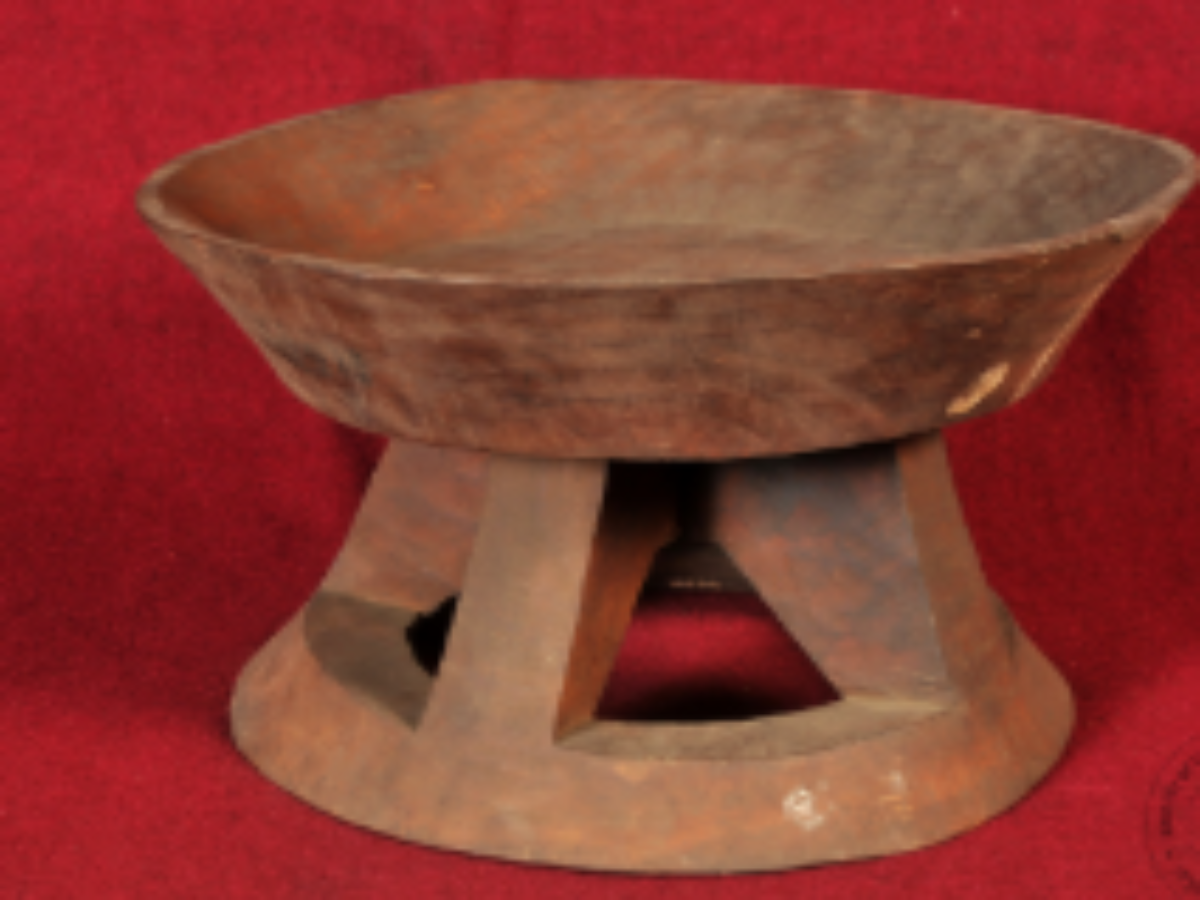State
Tribe Name
Art Type
short description
The Nagas, largely residing in Nagaland, are famous woodworkers who turn out utilitarian stuff with both cultural significance and practical use. One traditional item is the wooden dish with legs, representing finely crafted products and skills in wood carving and a deep understanding of natural materials. The wooden dish is made out of one piece of wood, demonstrating the artisan's precision and excellence. The elevation of the raised rim around the bowl helps in containing food or liquid items. However, the style with four heavy legs rests beautifully upon a platform-like ring at the very base. This not only offers stability and elevation to the dish, but also acts as an ornamenting feature on an otherwise pragmatic object.
Thumbnail

Filter Postion
Left
Filter Background
Off
Theme
Filter Header Image

content
Image

description
The Nagas, largely residing in Nagaland, are famous woodworkers who turn out utilitarian stuff with both cultural significance and practical use. One traditional item is the wooden dish with legs, representing finely crafted products and skills in wood carving and a deep understanding of natural materials. The wooden dish is made out of one piece of wood, demonstrating the artisan's precision and excellence. The elevation of the raised rim around the bowl helps in containing food or liquid items. However, the style with four heavy legs rests beautifully upon a platform-like ring at the very base. This not only offers stability and elevation to the dish, but also acts as an ornamenting feature on an otherwise pragmatic object.
Traditionally, the dish has been for communal meals, including offered feasts and rituals, especially during such Naga festivals as Hornbill or Sekrenyi. The legs of the dish elevate off the ground its contents, thus keeping the items clean and symbolizing the respect given towards the food being served. The single block of wood used for the piece and the artistry of its making show an interesting degree of thinking toward a useful artistic natural resource by the Naga tribe. Such items are usually passed down in families for generations, and may also come to serve some ceremonial purpose, hence denoting a deeper cultural significance.
Traditionally, the dish has been for communal meals, including offered feasts and rituals, especially during such Naga festivals as Hornbill or Sekrenyi. The legs of the dish elevate off the ground its contents, thus keeping the items clean and symbolizing the respect given towards the food being served. The single block of wood used for the piece and the artistry of its making show an interesting degree of thinking toward a useful artistic natural resource by the Naga tribe. Such items are usually passed down in families for generations, and may also come to serve some ceremonial purpose, hence denoting a deeper cultural significance.
Image Mode
landscape
promoted
On
Verified
Off
